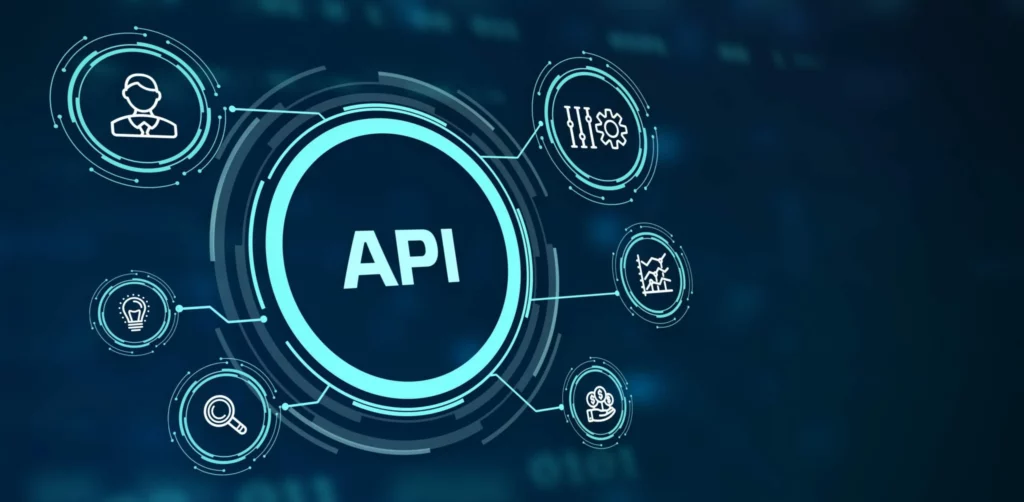Published on May 24, 2025
What is an API? A Complete Guide to Understanding APIs and Their Functions

In today’s digital era, you may often hear the term API, especially when talking about technology, application development, or web services. But, what exactly is meant by API? This article will help you understand the concept of API, how it works, its benefits, and examples of its use in everyday life.
Understanding API
API stands for Application Programming Interface, or in Indonesian, Application Programming Interface. In simple terms, API is a set of rules and mechanisms that allow various applications, software, or systems to communicate and interact with each other. API acts as an intermediary that connects different applications, allowing them to share data with each other or run certain commands.
How APIs Work
APIs work in a similar way to a waiter at a restaurant. When you order food, the waiter takes your order to the kitchen and returns with the food you want. In the context of APIs, the application requesting the information is called the client, while the application providing the information is called the server. The client sends a request to the server via an API, and the server returns a response that matches the request.
For example, when you use a weather app to view the weather forecast, the app is actually using an API to retrieve weather data from a data provider server. The API will determine how the weather app requests data, what type of data is requested, and how the server will respond.
Types of APIs
There are several types of APIs that are commonly used, namely:
- Open API (Open API/Public API)
This type of API is open to the public and can be used by anyone. Usually, this API is used by developers to add additional features to their applications without having to develop the features from scratch.
- Private API
This API is usually used internally in a company to connect systems or applications developed by the company.
- Partner API
Partner APIs are used by companies that want to share their data or services with certain partners only. Access to this API is limited and only given to parties who have established cooperation.
- Composite API
This type of API allows clients to access multiple API services at once in one request. Usually used for applications that require multiple types of data from various sources.
API Protocols and Methods
There are several protocols that are often used in API development, namely:
- REST (Representational State Transfer)
REST is one of the most popular and easy-to-use API architectures. REST uses the HTTP protocol and can handle requests via the GET, POST, PUT, DELETE, and other methods. APIs built with this architecture are called RESTful APIs.
- SOAP (Simple Object Access Protocol)
SOAP is an XML-based protocol that allows applications to exchange information with each other. Unlike REST, SOAP is stricter in setting data formats and is often used in environments that require high security.
- GraphQL
GraphQL is a query language for APIs developed by Facebook. Unlike REST, which usually takes a fixed set of data, GraphQL allows clients to specify the data they want to retrieve.
Basic Components in API
There are several main components in API that need to be understood:
- Endpoint
An endpoint is a specific URL or address on the server that can be accessed by the client to get certain data. For example, in a weather API, one of the endpoints could be /weather/today to get today’s weather information.
- Request
A request is how the client sends instructions to the server through the API. A request can contain parameters or additional data that helps the server understand what is being requested.
- Response
A response is data or information sent by the server in response to a client request. This data is usually sent in JSON or XML format.
- Key (API Key)
For security and restricted access, some APIs require an API key, which is a unique code given to developers to identify their applications. With this key, the server can monitor and limit the use of the API by clients.
Benefits and Uses of APIs
APIs have many benefits in modern application development, including:
- Efficiency and Time Saving
With APIs, developers do not need to build features from scratch. They can integrate existing services, such as online payments or interactive maps, so that the application development process becomes faster.
- Improving Interoperability
APIs allow different applications to interact with each other, even if they are developed with different technologies.
- Improving User Experience
API integration, such as social media or payment APIs, can improve the user experience by offering more complete features in one application.
- Enables Data or Service Monetization
Many companies provide APIs as paid services. Examples are API services from Google Maps or Twilio for sending SMS.
Examples of API Use in Daily Life
- Weather API
The weather application on your phone uses an API to retrieve weather data from the weather service provider’s server.
- Payment API
E-commerce platforms often use payment APIs, such as PayPal or Stripe, to securely process payments.
- Social Media API
Many apps and websites use social media APIs to display data from platforms like Instagram, Twitter, or Facebook.
- Maps and Location API
Apps like Uber or Gojek use Google Maps APIs to display maps and calculate distances.
Challenges in Using APIs
Despite having many benefits, using APIs also has several challenges, including:
- Security Issues
Because APIs allow access to sensitive data, strict security is needed to keep user data safe.
- Access Limitations and Rate Limiting
Some APIs have limits on the number of requests per day or per month, which can limit the use of applications.
- Third Party Dependence
When an application relies on an API from a third-party service, if the service experiences problems or changes, the applications that depend on it can also be affected.
Conclusion
APIs are an essential component in modern application development. With APIs, applications can communicate with each other and exchange data, allowing the integration of various services to create a better user experience. However, using APIs requires an understanding of different protocols, components, and methods, as well as careful management to maintain the security and stability of the application.
Hopefully, this article provides a clear picture of what APIs are, how they work, and their benefits. By understanding APIs, you will be better prepared to develop or integrate effective and responsive applications according to user needs.
That’s all the articles from Admin, hopefully useful… Thank you for stopping by…
